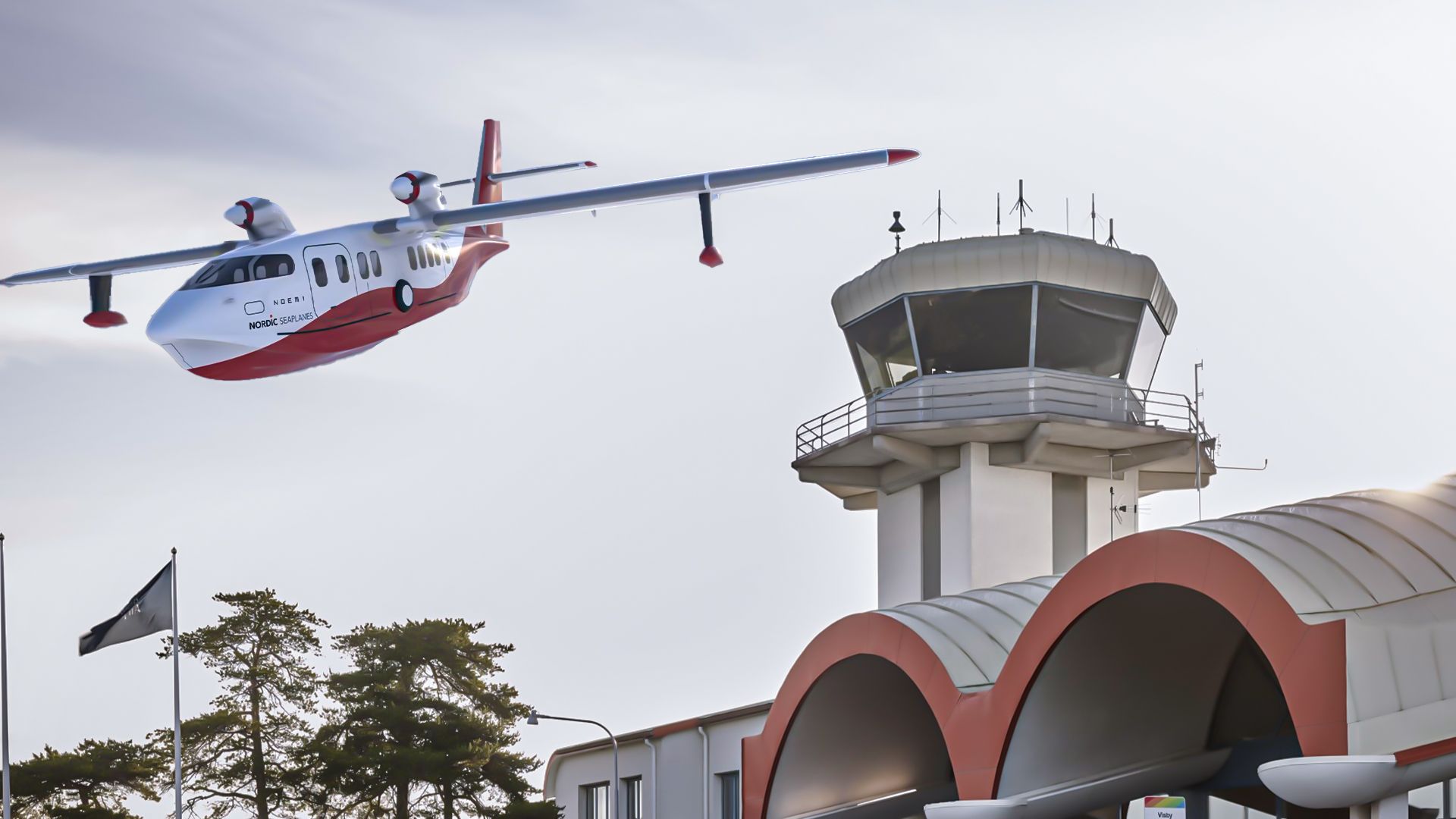Recent events have seen Scandinavia placed front and center when it comes to the development of electric aircraft. Norwegian planemaker Elfly recently made headlines when it signed a Memorandum of Understanding with Danish airline Nordic Seaplanes to provide the carrier with up to 15 ‘Noemi’ electric aircraft.
Simple Flying was present for the signing event in Copenhagen, where various other Scandinavian dignitaries also took the time to make their case for electric flight in the region. Among these was Meit Fohlin, who serves as the mayor of the Swedish island of Gotland, which looks set to become a proving ground for such planes.
Gotland in a nutshell
Situated just off the southeast coast of the Swedish mainland in, as Fohlin put it to the assembled media at the Elfly signing ceremony, “the middle of the Baltic Sea,” Gotland is Sweden’s largest island, covering almost 3,000 square kilometers. While the island’s permanent population lies just above the 60,000 mark, its mayor notes that, tourism-wise, “about 1 million visitors” come to Gotland every year.
Photo: Per Wilhelmsson | Shutterstock
With no road links to the mainland, the island relies on boats and planes to keep these visitors and its own inhabitants, on their travels, moving. When it comes to aviation, Gotland is served by Visby Airport (VBY), which handles regional traffic from destinations in Finland, Norway, and Sweden. According to Cirium, an aviation analytics company, the following airlines are serving Visby this year:
|
Airline |
Flights to/from Visby in 2024 |
|
Braathens Regional Airlines (BRA) |
4,658 |
|
Scandinavian Airlines (SAS) |
1,062 |
|
Norwegian |
104 |
|
Finnair |
74 |
Change has to start somewhere
With just over 450,000 seats scheduled on flights to and from Gotland this year, it would be easy to argue that Visby Airport represents a drop in the ocean when it comes to commercial aviation traffic in Europe and the world as a whole. However, Fohlin emphasizes that “the transport and infrastructure system must be sustainable over time” regardless of the scale, pointing to the fact that:
“The climate situation may be global, but we [also] need to work on a local level.”
With this initiative in mind, Visby Airport and Gotland as a whole could end up being an ideal proving ground for electric aircraft, as such technology will likely be more of a factor in regional aviation than on high-demand mainline routes. Of course, with it being an island, the development of Elfly’s ‘Noemi’ electric seaplane also represents an exciting step forward as a potential coastal air mobility solution.
Electric flight in four years?
Naturally, verbal commitments are all well and good, but they need accompanying quantifiable goals and milestones in order to make them feel tangible. As part of Gotland’s regional development plan, the island has set an ambitious goal with regard to electric flight, with Fohlin explaining that this should help to catalyze change and development, even if the goal itself is not achieved. She states:
“Emissions from transport on Gotland have to decrease by at least 70% compared to 2010 [by 2027/28]. And we also said in 2022 that we will have an electric aircraft in commercial service to and from Gotland by 2028. Is it doable? We’re not crazy, we know that maybe it’s not, but we had to think this to actually get it done. If we don’t point it out, then we wouldn’t be here today, and we wouldn’t work together to reach it.”
Photo: Per Wilhelmsson | Shutterstock
While this target was set two years ago, the idea of electric flight in Gotland has existed in the hearts and minds of its politicians for longer. According to Fohlin, “in 2020, we pointed out that flights to Gotland should be among the first routes where electric flights in commercial traffic become a reality.” Since then, the island has set the aforementioned 2028 goal, and devised a corresponding roadmap.
Infrastructure is already in place
On a more tangible level, Gotland has also made key steps when it comes to supporting the advent of electric flight by installing infrastructure at Visby Airport. Most notably, Airport Technology reported in October 2021 that three charging stations for such planes had been unveiled at the facility, with two being located on the airport’s main apron. The other can be found at the on-site Gotland Flying Club.
Photo: Swedavia
Stakeholders across the board welcomed this move as a key step forward, and Airport Technology also noted at the time that there was already interest from a local airline in deploying electric planes on one of the main air routes to and from Visby/Gotland. The publication went on to quote Swedavia Visby Airport Airport Director Gunnar Jonasson as having stated the following on the matter:
“In addition to the airport and aircraft manufacturers, there is also an airline, Braathens Regional Aviation (BRA), which sees the potential and wants to start flying commercial electric aircraft between Gotland and Stockholm once this is possible.”
What’s next?
In terms of what comes next for Gotland when it comes to realizing the dream of electric flight, there are still four years to achieve its goal of commercial service at Visby Airport. Nonetheless, the region remains invested in this side of sustainable aviation in the short term, with Gotland hosting a conference on the matter on an annual basis. As it happens, the next iteration will be held in mid-November.
Photo: Peter Phillips | Swedavia
In the longer term, Fohlin hopes that Gotland’s progress will set an example for other islands in the Nordic region when it comes to sustainable aviation. She concludes that “we work together with other islands a lot when it comes to renewables like wind energy and solar power. We work with other islands and, with this kind of coastal flying, this will really open up [a lot of] new things for us.”





